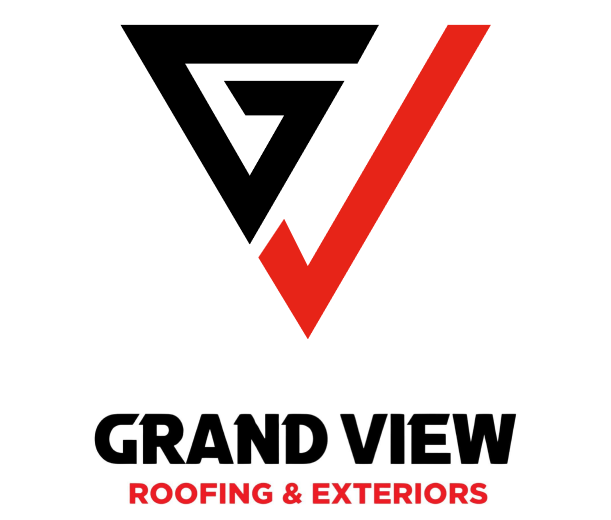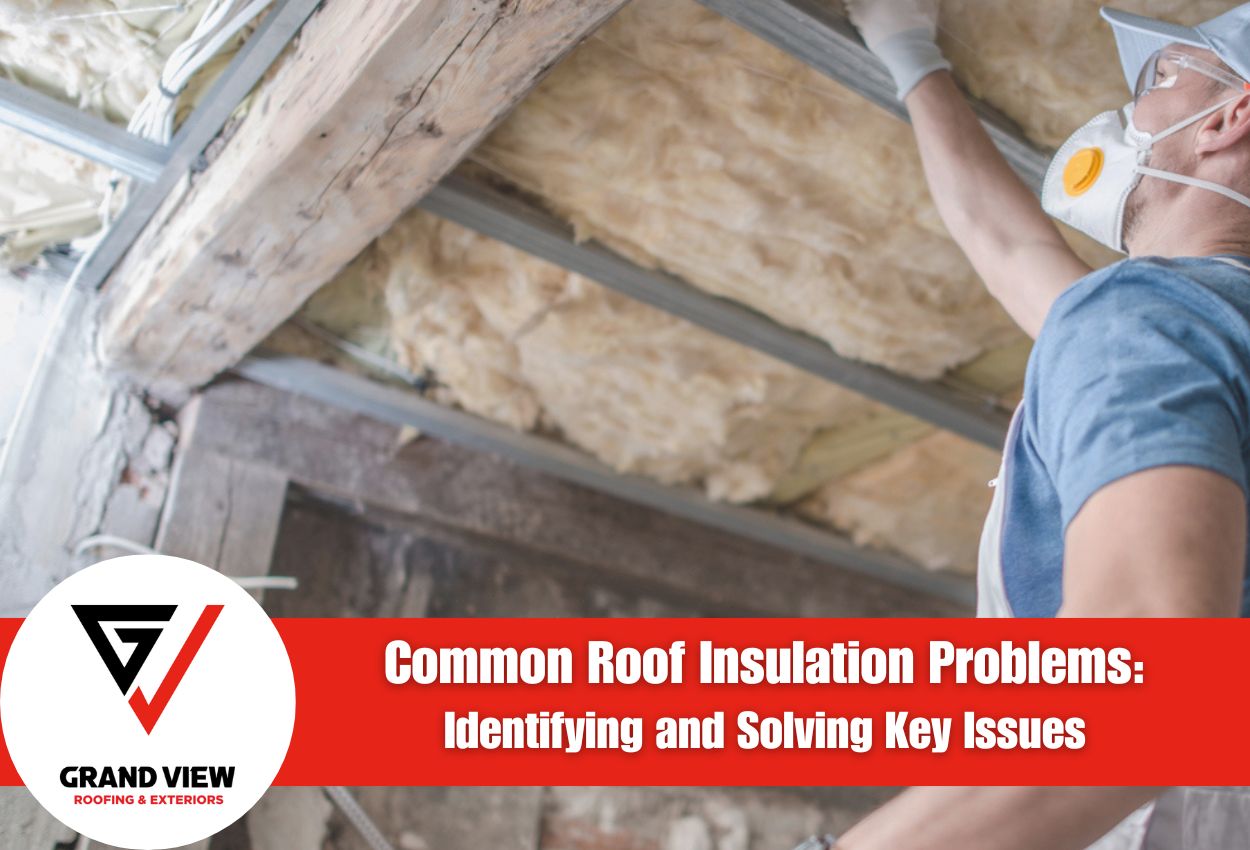Roof insulation serves as an important barrier between your home and the outside elements, maintaining energy efficiency and indoor comfort throughout South Jersey’s seasonal weather. When it’s installed and working properly, quality insulation keeps warm air inside during winter and prevents hot air from entering during summer. However, many homeowners face insulation issues without recognizing the warning signs until their energy bills skyrocket or comfort levels drop dramatically.
From inadequate installation and compressed materials to moisture damage and poor ventilation, these problems manifest through various signs that careful homeowners can detect. Recognizing these warning signals allows for quick intervention, protecting both your home’s structure and your wallet from unnecessary strain.
Common Signs of Roof Insulation Failure
Recognizing the early indicators of roof insulation problems can save South Jersey homeowners from expensive repairs and uncomfortable living conditions. By understanding what to look for, you can address issues before they turn into major concerns.
Visual indicators often provide the first sign that insulation is failing. Watch for uneven snow melt patterns on your roof during winter — areas where snow melts faster suggest that heat is escaping through poorly insulated sections. In your attic, inspect for visible damage to insulation materials, such as compression, discoloration, or areas where insulation has shifted away from joists. Water stains on attic surfaces, dampness in insulation materials, or rust on roofing nails signal moisture problems that can quickly compromise insulation effectiveness.
Moisture and Water Damage Issues
In South Jersey’s humid climate, moisture damage is one of the most destructive forces affecting roof insulation. When water vapor becomes trapped within insulation materials, it creates an ideal environment for mold growth while dramatically reducing the insulation’s thermal resistance. This problem is particularly common in our region, where coastal humidity and seasonal temperature swings create perfect conditions for condensation to form within the attic.
Different insulation materials react differently to moisture exposure, but it’s never a positive effect:
- Fiberglass insulation loses up to 40% of its R-value when damp and can sag away from the roof deck, creating thermal gaps.
- Cellulose insulation absorbs moisture easily, becoming heavy and compressed while providing a material that’s perfect for mold growth.
- Foam insulations, though more water-resistant initially, can develop mold on their surfaces and separate from roof structures when repeatedly exposed to moisture.
The water that affects this insulation typically comes from three primary sources: roof leaks allowing direct water entry, condensation forming when warm air meets cold surfaces, or humid air that’s trapped from a lack of ventilation. Left unchecked, these moisture problems progress from simple performance reduction to full-on damage, including wood rot along the roof deck, rusted fasteners, deteriorated insulation, and widespread mold contamination.
Installation and Material Shortages
Even high-quality insulation materials can fail to deliver the right amount of thermal protection when they’re not installed correctly. In our experience serving South Jersey homes, we frequently encounter insulation gaps where materials don’t properly meet at joints or around roof penetrations like vents and chimneys. These seemingly small spaces allow for significant heat transfer, undermining the entire insulation system’s effectiveness.
Compression represents another common installation problem, particularly in attics with limited clearance. When installers force thick batts into tight spaces or homeowners stack items on top of insulation, the compressed material loses significant R-value. Proper insulation requires maintaining its designed thickness to trap the air pockets that provide thermal resistance. Similarly, we often find improper fitting around electrical fixtures, where installers cut corners instead of carefully tailoring insulation around obstacles.
Problems with the material quality make these problems worse. Lower-grade insulation products begin deteriorating shortly after installation, with fiberglass losing its loft and cellulose settling quickly over time. This settling creates unprotected areas near the peaks of attics where heat loss becomes most pronounced during South Jersey winters. Some spray foam products can shrink or pull away from framing members as they age, while inferior reflective barriers may delaminate in our region’s humidity.
Ventilation-Related Insulation Problems
Ventilation systems in the roof work hand-in-hand with insulation to create an effective thermal barrier. When ventilation fails, even the highest quality insulation cannot perform as designed. In poorly ventilated attics, excessive heat and moisture become trapped, creating a hostile environment that breaks down insulation materials. During the summer, temperatures in an inadequately ventilated South Jersey attic can soar above 150°F, causing certain insulation types to compress, deteriorate, or even melt, while creating perfect conditions for moisture accumulation when temperatures drop at night.
South Jersey homes present several unique ventilation challenges that directly impact insulation performance. Blocked soffit vents are extremely common, often clogged with debris or unintentionally covered during prior insulation installations. Without this critical intake vent, hot, moist air sits in the attic without being pushed out. Similarly, inadequate or improperly installed ridge vents prevent the natural chimney effect that should draw air up and out of the attic. We frequently discover homes with completely insufficient exhaust venting relative to the attic’s square footage, creating pressure imbalances that force moisture into insulation materials.
Pest and Wildlife Damage
Rodents like squirrels, raccoons, and mice commonly seek shelter in attics, shredding insulation materials to create nesting sites. These pests don’t just displace insulation — they actively destroy it by tunneling through batts and loose-fill materials, creating gaps that allow heat to escape. Birds, particularly starlings and sparrows prevalent in our region, build nests that compress insulation and block ventilation pathways, while insects such as carpenter ants and termites compromise both insulation and the surrounding structure.
You might start noticing signs of pest activity in your insulation, including visible droppings, chewed materials, nesting debris, and unusual odors in the attic space. You might notice insulation that appears disturbed or pulled away from edges and corners as well, which are prime areas where animals create entry points. More subtle signs include unexplained energy bill increases as damaged insulation loses its effectiveness, or unusual sounds coming from above ceiling areas.
Beyond the direct damage to insulation, pest infiltration creates secondary problems that compound over time. Animal waste contaminating insulation materials can pose serious health hazards through airborne pathogens. Tunnels created through insulation form air channels that bypass your thermal barrier, while nesting materials can block crucial ventilation paths. Addressing pest damage typically requires removing affected insulation completely, sealing entry points, implementing preventative measures, and installing fresh insulation to restore your roof’s thermal efficiency.
Professional Solutions for Roof Insulation Problems
Knowing when to tackle roof insulation issues yourself versus calling professionals can save South Jersey homeowners both time and money. DIY approaches work well for minor issues like small gaps in existing insulation or installing additional layers in accessible attic spaces. However, when facing widespread moisture damage, significant pest damage, or structural concerns affecting your roof’s insulation system, professional intervention becomes essential. Experts can identify hidden problems that might go unnoticed during self-assessment and provide comprehensive solutions rather than temporary fixes.
Modern roofing options have introduced several advanced solutions specifically addressing the unique insulation challenges faced in South Jersey’s climate. High-performance spray foam applications now offer superior air-sealing properties while maintaining flexibility during seasonal temperature fluctuations. For homes with limited attic space, professionals can use blown-in insulation systems that reach difficult corners and provide consistent coverage. Reflective radiant barriers have also proven to be particularly effective against our intense summer heat, working alongside traditional insulation to significantly reduce cooling costs.
Professional contractors also bring specialized knowledge about creating balanced insulation-ventilation systems. This includes installing proper soffit-to-ridge ventilation pathways, moisture barriers that prevent humidity infiltration, and strategic insulation placement that maximizes energy efficiency while minimizing condensation risks. With professional assessment and installation, South Jersey homeowners can achieve insulation systems specifically engineered for our region’s unique challenges.
Get Quality Roof Insulation in South Jersey with Grand View Roofing & Exteriors
If you’re noticing any of the common signs of roof insulation problems, like uneven temperatures, visible mold, or increased energy bills, it’s important to act quickly to mitigate further damage and restore your home’s comfort and efficiency. Grand View Roofing & Exteriors specializes in addressing and resolving all types of roof insulation issues, ensuring your home stays warm in winter and cool in summer without breaking the bank.
Ignoring these signs can lead to more severe damage, costing you more in the long run. Don’t let insulation problems compromise the integrity of your home. Contact Grand View Roofing & Exteriors today at (856) 305-9883 to schedule a professional assessment and get a tailored solution that fits your needs and budget.





 Call Us Today - (856) 305-9883
Call Us Today - (856) 305-9883 
